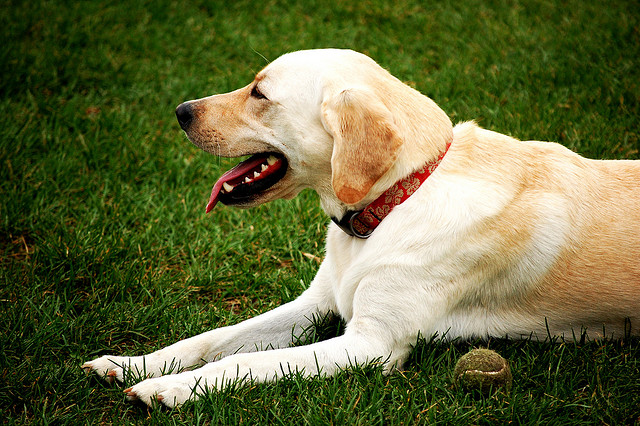
]With summer just around the corner, it’s important to pay attention to your dog and make sure he is getting enough to drink. It’s something that is rarely thought about, but all dogs are susceptible to dehydration. So this is something all dog owners should be knowledgeable about.
Signs of Dehydration in Dogs

Dr. Kim Smyth, Petplan Staff Veterinarian, says to watch for these symptoms:
- Lethargy
- sunken eyes
- loss of appetite or interest in water
- dry mouth.
“Some illnesses – like diabetes, cancer and kidney failure – can make it more difficult for a dog to keep himself adequately hydrated making them more susceptible to dehydration,” she adds. “Also, dogs who are experiencing bouts of diarrhea or vomiting can also become dehydrated.”
Keep ‘Em Hydrated

Be sure to have fresh water available at all times and in warm weather make sure you have more than the normally put out.
- To encourage your dog to drink, try some of the following tricks:
- Add ice cubes to the water
- Add a broth to the water (for flavor)
- Give your dog ice cubes to eat/play with
- Add water to your dog’s dry kibble
- Feed him some wet food with his dry food
- Give him “water breaks” while playing outside – bring him inside and wait until he drinks before going back out. Just like kids, sometimes dogs don’t want to stop playing to drink water!
- Soak a clean, new toy in water for your dog to chew/suck the water out.
What if My Dog Won’t Drink?
“If you think your dog is dehydrated it is important to call your veterinarian,” Says Dr. Smyth. “Your vet may recommend subcutaneous or intravenous (IV) fluids to help your dog’s hydration levels stabilize. Subcutaneous fluids are given with a needle just under the skin and can be administered in the office and IV fluids are given through a catheter placed in the dog’s circulatory system – which can quickly replenishes fluids – and requires hospitalization. Your veterinarian can also assess the underlying cause of your dog’s dehydration and get him any other treatment that he may need.”
Dehydration can be a sign of heatstroke or lead to other complications that are fatal. Watch your dog and make sure he is getting plenty of water.
About the Author
Based in Wilsonville, Ore., animal lover Kristina N. Lotz is a Certified Professional Dog Trainer – Knowledge Assessed (CPDT-KA) and a member of the Dog Writers Association of America. She is the founder of A Fairytail House. In her spare time, she trains and competes in a variety of performance events with her Shetland Sheepdogs and caters to her two rescue kitties. She smartly married a Veterinary Technician, who helps keep the fur kids happy and healthy, and provides a quick resource for articles.
